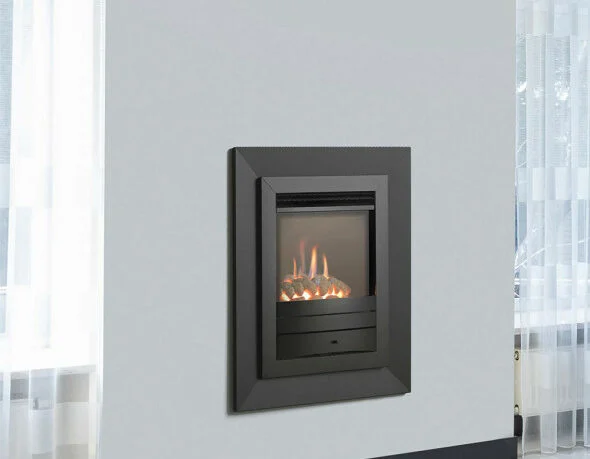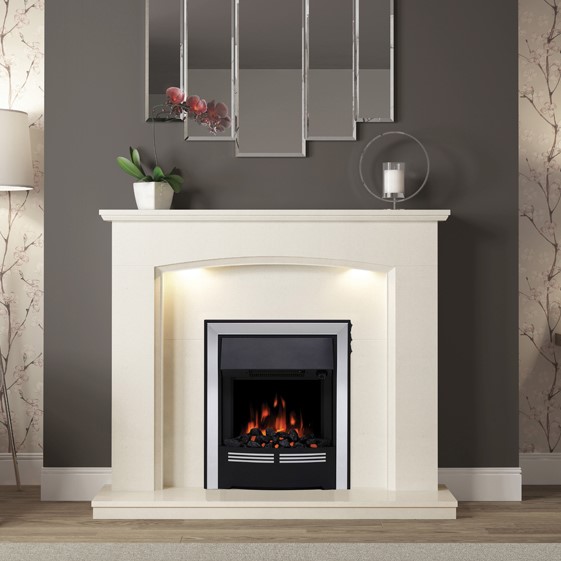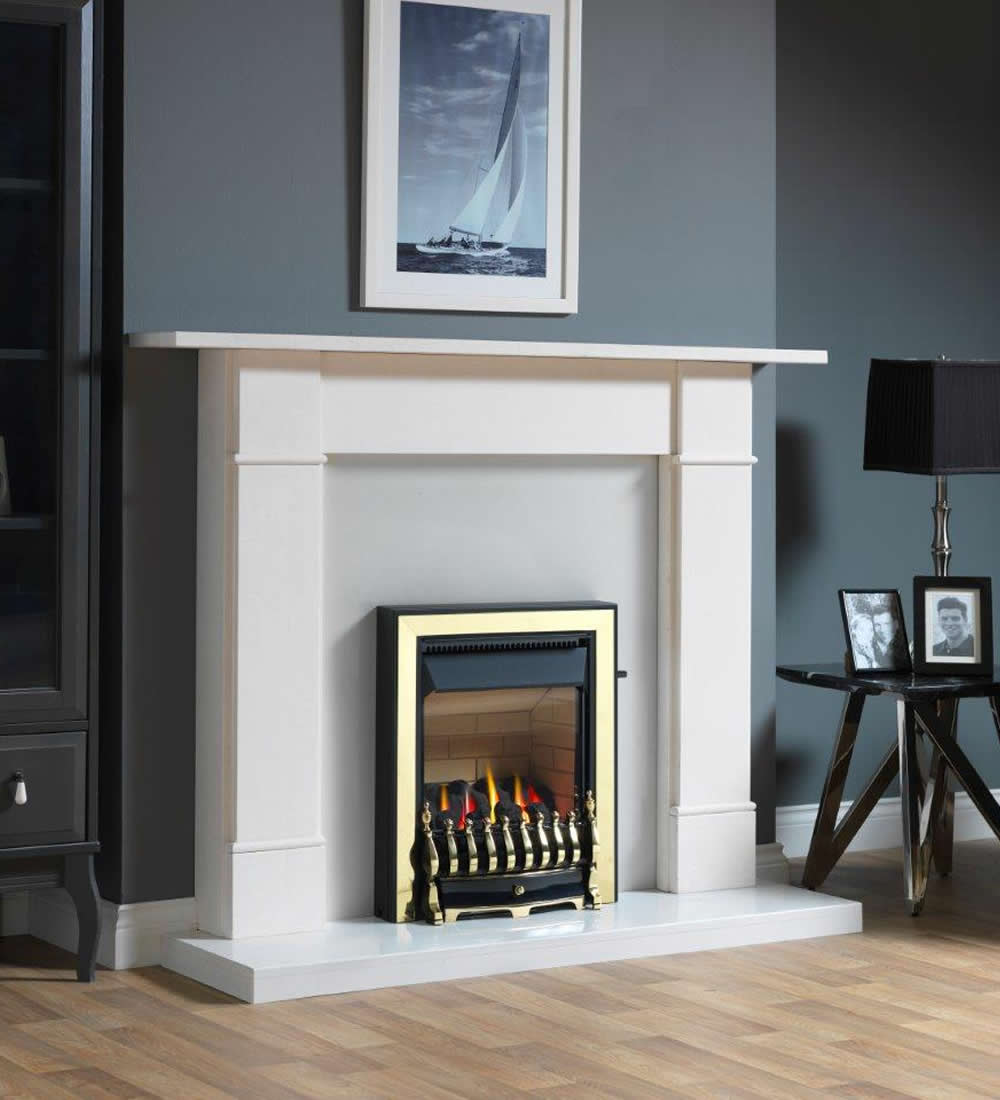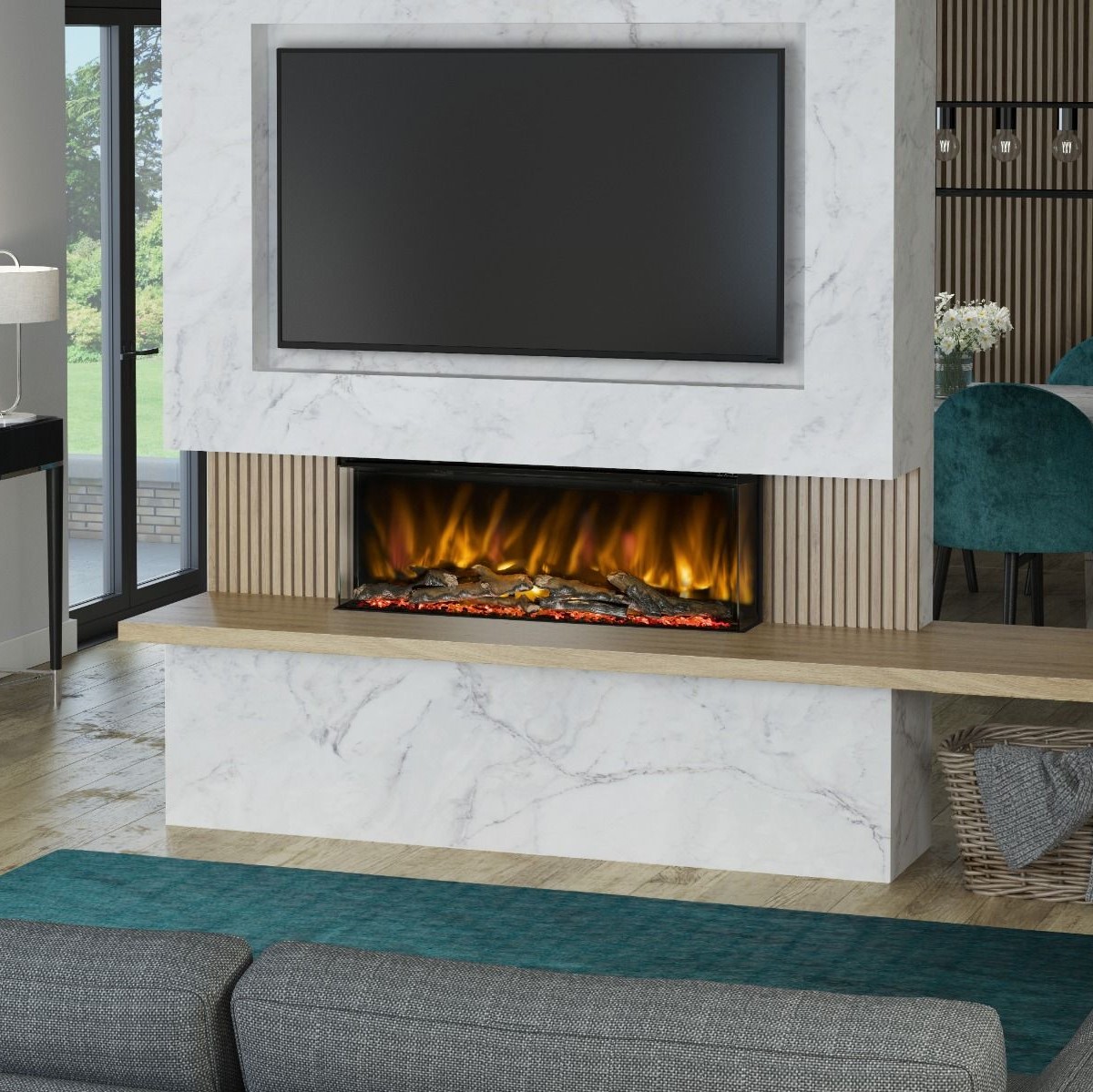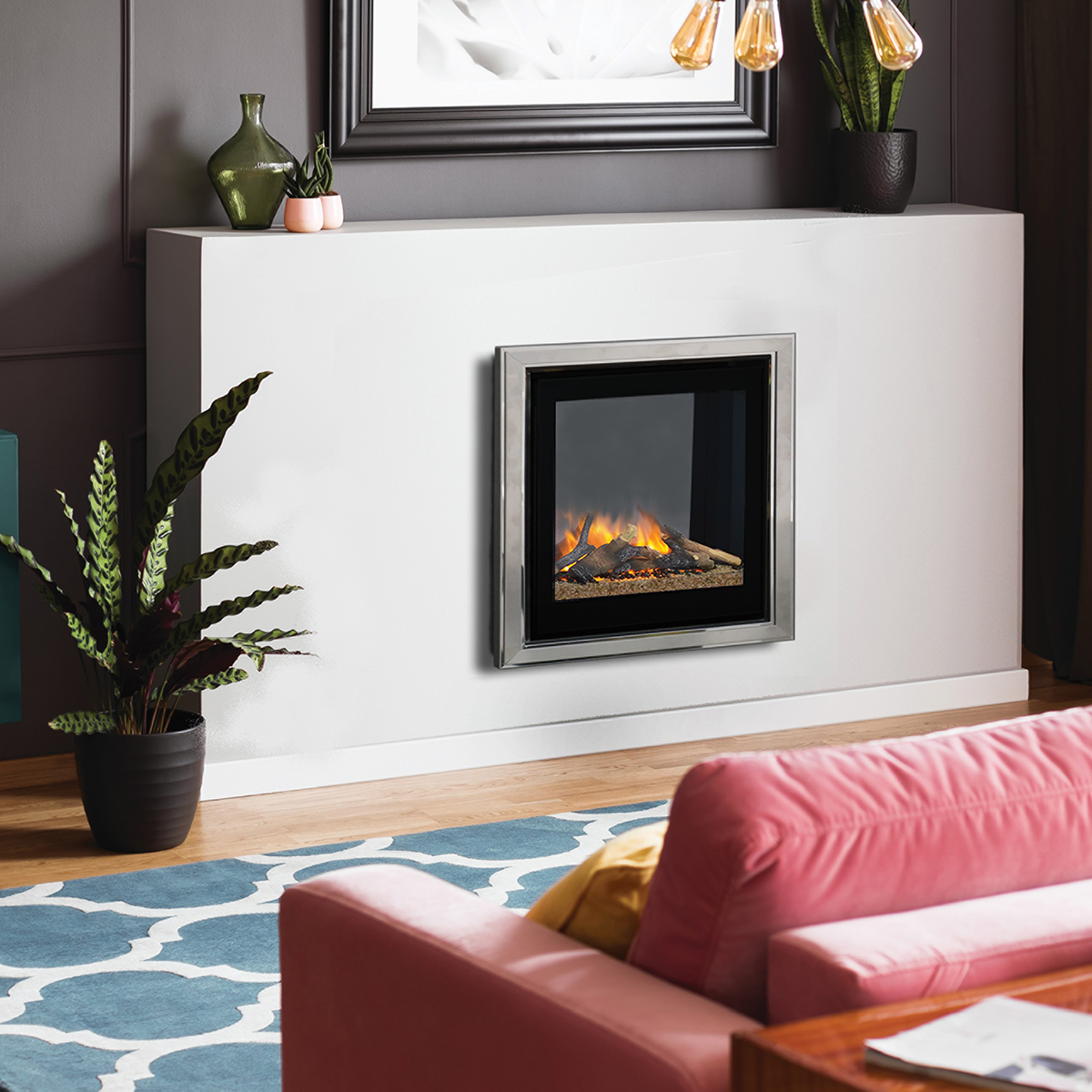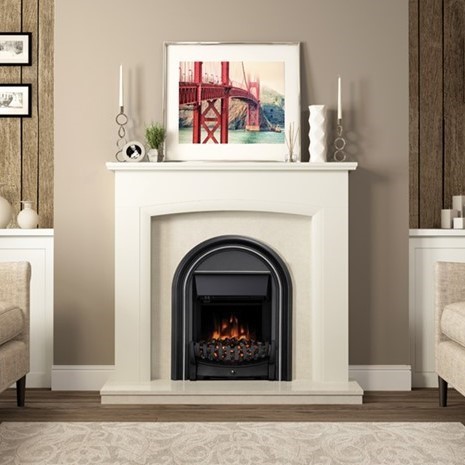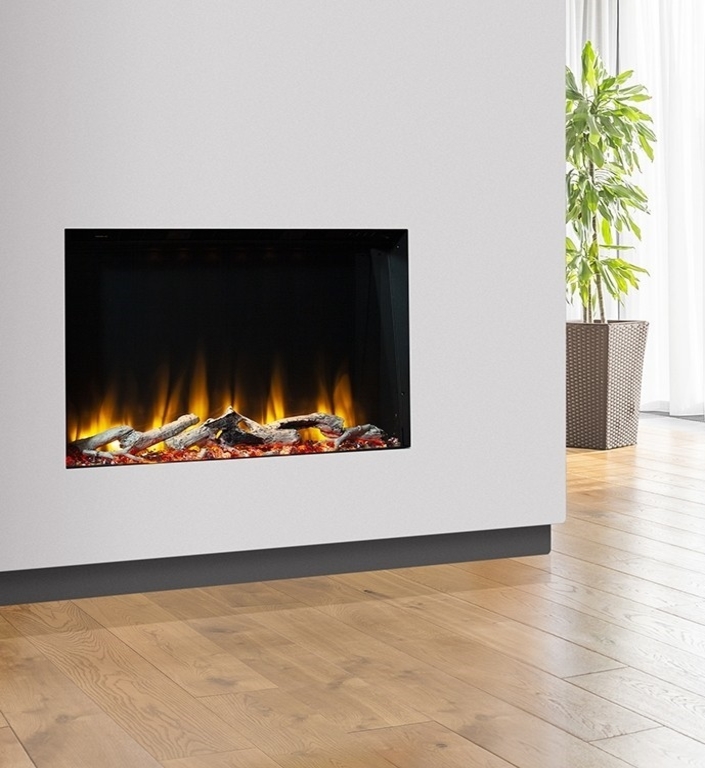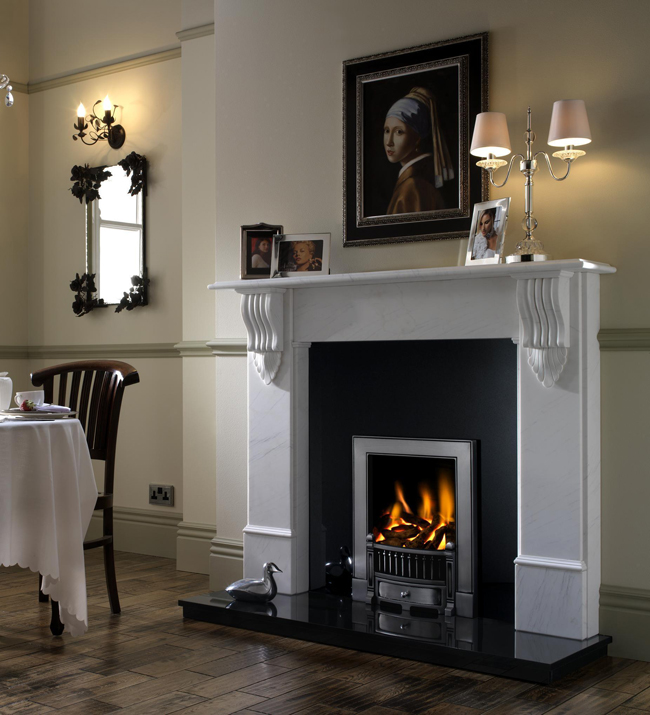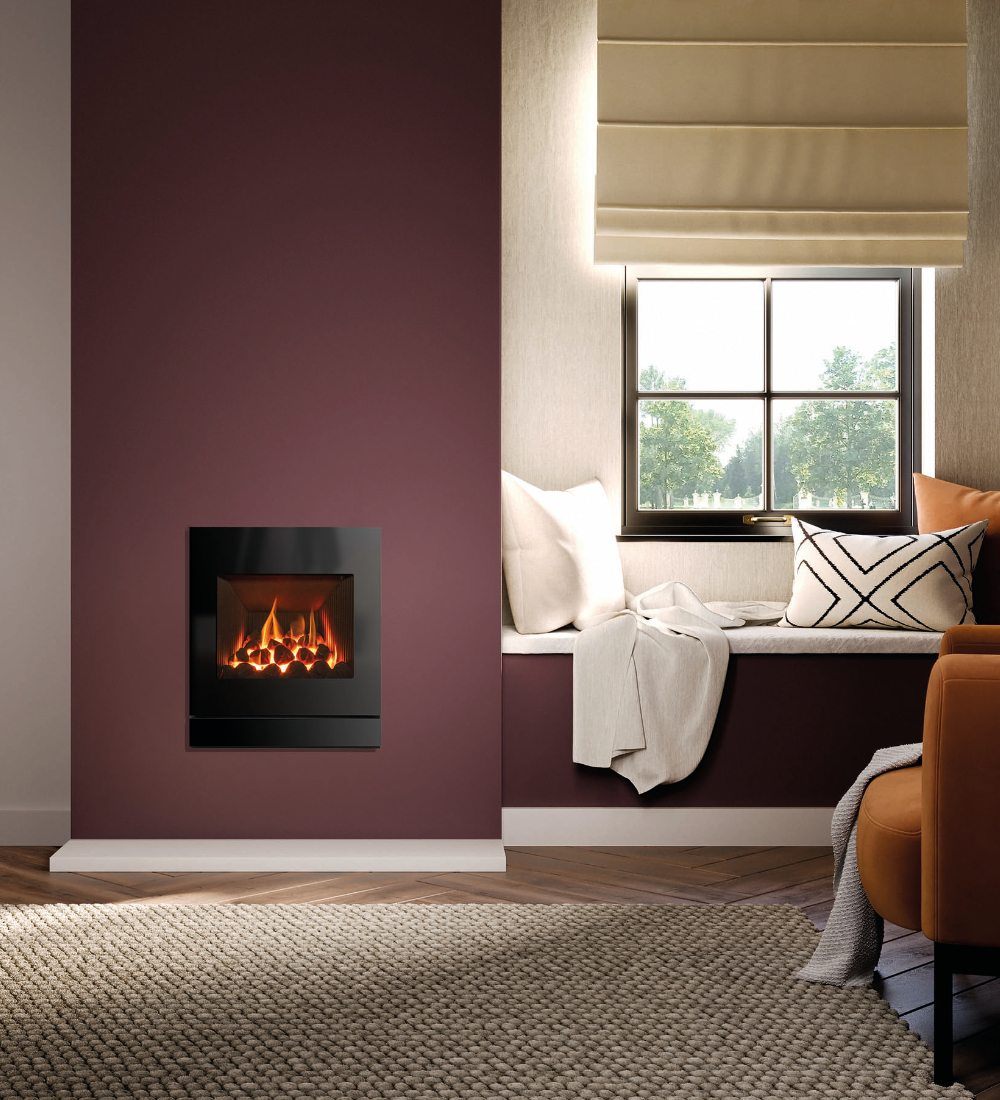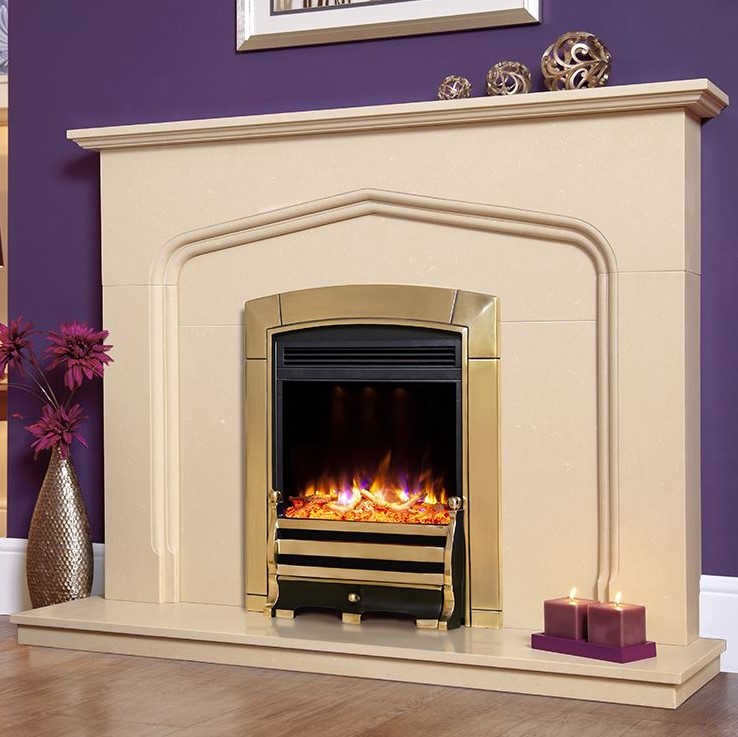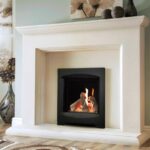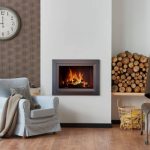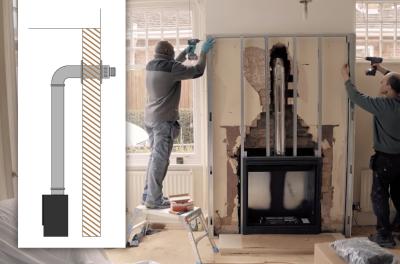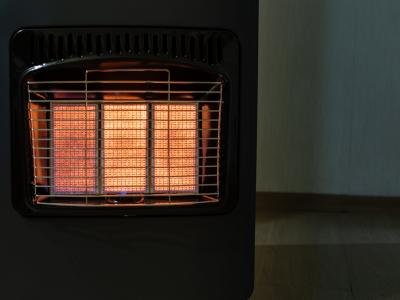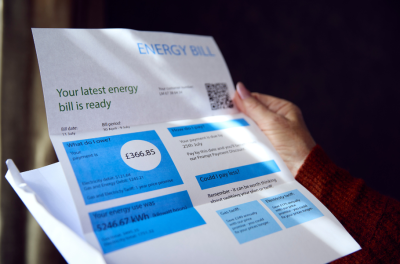We use cookies to improve your experience and our business. See our privacy/cookie policy or continue browsing to accept our use of cookies. View our cookie policy.
Inset Fire Buying Guide
An inset fire is a modern-day hearth, setting the mood for a cosy evening or adding that finishing touch to your living room. However, with so many options, making the right choice can take time and effort. If you’re looking for the ideal inset fire to complement your space, this guide is here to help.
What is an inset fire?
Simply put, an inset fire is designed to sit flush inside a recess in a wall or within an existing fireplace. This means it sits back into the wall, offering a neat, space-saving solution. Unlike traditional fireplaces, which can sometimes protrude or require a dedicated hearth, inset fires provide the warmth and ambience you want for your area without demanding too much room real estate.
Read more: Guide to Inset Gas & Electric Fires
Why are inset fires popular?
In an age of compact living and minimalistic design, the popularity of inset fires has surged. Why? Well, their sleek and streamlined appearance works well with contemporary interiors, ensuring that even the most modern homes can enjoy the glow of a fire without compromising on style.
What’s more, inset fires aren’t just about aesthetics. They bring a certain level of practicality. As they’re fitted into the wall or an existing fireplace, they reduce potential hazards like tripping, which might be a concern with freestanding heaters or fireplaces.
A bridge between the old and the new
While the design and technology behind inset fires might be thoroughly modern, their essence taps into something deeply traditional. They are cast in the central role that the hearth once played in homes of the past – a focal point where families gathered, stories were shared, and memories made.
To sum it up, inset fires offer the best of both worlds. They combine the ageless charm of a fire’s glow with cutting-edge design and functionality that fits seamlessly into modern homes. Whether you’re looking for a source of warmth during chilly winters or an aesthetic upgrade to your living space, an inset fire can be an excellent addition.
Inset fire types
With their ability to seamlessly merge with a room’s design, inset fires have evolved in types based on fuel sources, functionality, and design preferences. Here’s a closer look at the various kinds of inset fires available.
Electric inset fires
Electric inset fires are incredibly versatile and are often chosen for their fuss-free setup and varied design options. They have come a long way in terms of design. With advancements in LED technology and digital imagery, you can enjoy realistic flame effects, from glowing logs to flickering ember beds.
Plus, many electric inset fires come with adjustable heat settings. This means you can enjoy the visual appeal of the flames even in warmer months by simply turning off the heat.
What’s more, electric fires do not produce any emissions. The result? It is a cleaner environmental option than traditional wood or multi-fuel fires.
Learn more: Gas or Electric Fires: Which is Best?
Gas inset fires
Gas fires are ideal for those who desire an authentic fireplace experience, with the beauty of genuine flames and the convenience of modern technology.
With a gas inset fire, you get a real flame. Not only does this provide efficient heat, it also offers that mesmerising, dancing fire that so many people love. Plus, modern gas fires are designed to be energy efficient, ensuring that more of the gas burned is converted into heat for your room.
While a gas inset fire typically requires a flue or chimney for proper ventilation, there are also flueless gas fire options that, through advanced technology, clean the emissions within the unit and safely release the by-products into the room.
Fireplace vs hole-in-the-wall inset fires
When deciding on an inset fire for your home, one of the critical decisions involves choosing between a traditional fireplace setting or a modern hole-in-the-wall design. Both have distinct characteristics and advantages. Let’s take a closer look.
Traditional fireplace inset fires
As you might imagine, these are inset fires that sit within an existing fireplace or a specially constructed fireplace surround.
Pros
- Classic appeal: They’re perfect for homes with a traditional aesthetic, retaining the charm of old-world fireplaces. This kind of inset fire can be a fitting tribute if you have a period home.
- Decorative mantelpiece: The mantelpiece above the fire can be used as a decorative space, perfect for family photographs, clocks, or festive decorations.
- Variable design: Although typically associated with classic homes, you can find more contemporary fireplace and inset fire designs for a modern look.
Cons
- Space consumption: Fireplaces, by design, take up more room space due to the size of the surround and hearth.
- Installation requirements: You may need a dedicated chimney or flue, especially if choosing a gas inset fire.
Hole-in-the-wall inset fires
As the name suggests, these fires are installed directly into a hole or recess in the wall. Typically, they are installed at eye level. They don’t require a traditional fireplace surround.
Pros
- Modern aesthetic: A hole-in-the-wall inset fire offers a contemporary, minimalist look, which can be a striking feature in modern homes.
- Space-saving: Without needing a surround or mantelpiece, a hole-in-the-wall design is perfect for rooms with limited space.
- Versatility: These fires can be positioned at various heights, depending on your room layout and design preferences.
Cons
- Installation limitations: Some homes, especially older ones, might require significant structural work to accommodate a hole-in-the-wall design.
- No mantelpiece: Unlike traditional fireplaces, there’s no ledge to display items, which might be a drawback for some.
Choosing the right size inset fire
When choosing an inset fire for your home, understanding the dimensions is essential. The right fit ensures aesthetic appeal, proper functionality, and safety.
Contrary to popular belief, there is a standard size that many inset fires adhere to. This typical measurement is 410mm x 560mm (16in x 22in). These aren’t random dimensions – they align with the openings cut into most fireplace back panels, making them convenient for many homeowners.
Dimensions matter
When talking about size, we often only think of width and height. However, with an inset fire, depth plays an equally important role.
- Width and height: These measurements determine how the fire will fit into its designated space and how much wall it will occupy. An inset fire that’s too large can dominate a small room, whereas a too-small fire might look insignificant in a large space.
- Depth refers to how far the fire will protrude into the wall cavity. A fire with significant depth requires a deeper recess. Ensure the recess can accommodate the chosen depth without any structural complications.
Adjusting width, height and depth
While you might have some flexibility with the height and width of your chimney or wall cavity, the depth is a different matter entirely:
Different chimney classes can accommodate varying depths of inset fires. For instance:
- Class 1 chimneys are deeper, making them compatible with more profound inset fireplaces.
- Class 2 chimneys, on the other hand, are shallower, which means they need a slimmer fire.
Electric inset fires provide a unique advantage – they don’t require a chimney. However, the wall’s depth is still important. Make sure that your wall can comfortably accommodate the inset fire’s depth, especially if you want a flush finish.
Proportional aesthetics
An inset fire should enhance, rather than disrupt, the ambience of a room.
- Visual balance: A well-proportioned fire will seamlessly blend with the other elements in the room, from furniture to artwork. For example, a petite fire might look out of place if you have a grand, expansive wall.
- Space considerations: Consider a slimmer, vertical design in more compact rooms. This design choice utilises height rather than width, saving precious horizontal space.
Inset fire installation space
Ensuring you have the correct measurements for installation is essential to avoid complications.
- Recess dimensions: Once you’ve chosen your preferred fire size, measure (or have a professional measure) the width, height, and depth of the recess where the fire will be installed. Remember to account for any additional space required for ventilation or other components, especially for gas fires.
- Clearance space: Some fires require additional space around them for safety, especially near flammable materials. Ensure you check for any such specifications and factor them into your measurements.
Beyond basics: Additional features for your inset fire
When selecting an inset fire, there’s more to consider than the type, size, and design. Many modern inset fires come with a wide range of additional features that enhance functionality, safety, and user experience. Here’s what to look out for:
Remote control functionality
Gone are the days when you’d have to manually light or adjust your fire. Many contemporary fires come with the following:
- Temperature control: Adjust the heat settings without leaving your sofa, ensuring a comfortable room temperature.
- Flame effect adjustments: Especially for electric inset fires, this feature controls the intensity and look of the flame for the perfect ambience.
Thermostatic control
This intelligent feature automatically adjusts the fire’s heat output based on the room’s current temperature.
- Maintains consistent room temperature: The fire will emit more heat if the room cools down and reduces its output once the desired temperature is reached.
- Energy efficiency: By only using the necessary amount of energy to maintain the set temperature, thermostatic control can help you save on energy bills.
Inset fire safety features
Safety is paramount, especially when considering heat and domestic environments. Look out for:
- Overheat protection: This feature ensures the fire turns off automatically if it becomes too hot, preventing potential damage or hazards.
- Child safety locks: A feature particularly relevant for households with young children, preventing unintentional changes to settings or accidental turn-ons.
Timer functions
For those who seek optimal convenience, timer functions are a must-have.
- Scheduled on/off: Set your fire to turn on just before you arrive home, ensuring a warm welcome, or program it to turn off after a set period, providing peace of mind.
- Energy saving: By running your fire only when needed, timers can increase energy efficiency.
Adjustable LED backlighting
This feature, often found in electric inset fires, allows you to set the mood in your room even further.
- Ambience: Choose from a variety of colours or effects to complement the flames, adding depth and drama to your space.
- Personalisation: With some fires, you can tailor the backlighting to your interior design or mood. It’s a feature that allows you to make your inset fire an integral part of your room’s design narrative.
Who should install my inset fire?
The installation of an inset fire often involves safety, precision, and adherence to regulations. Getting the right professional for the job can make the difference between a seamless, safe setup and potential complications down the line.
Learn more: Hole In The Wall Gas Fire Buying And Installation Guide
Gas inset fire installation
If you’re opting for a gas inset fire, it’s crucial to ensure the installation is carried out by a certified professional.
Anyone working on gas appliances in the UK must be Gas Safe registered. These professionals possess the necessary skills and training to handle gas installations safely and effectively.
Incorrectly installed gas appliances can lead to leaks, explosions, and carbon monoxide poisoning. So, using a registered engineer isn’t just good practice – it’s a legal requirement.
Electric inset fire installation
While electric fires are generally less complex to install than gas ones, they still come with unique challenges. If you feel confident, installing an inset electric fire might be something you want to DIY.
Otherwise, consider working with a professional adept at handling electrical installations. For example, a qualified electrician will be required if you wish to move power sockets closer to your inset electric fire. They will ensure that all connections are secure and the system is safely integrated into your home’s electrical circuit.
Find your perfect inset fire at Direct Fireplaces
Looking for an inset fire for your home? Browse our extensive range of electric inset fires and gas inset fires today. With a huge selection of styles, colours, and heat outputs, you're sure to find the perfect fit for any room.
Buying your inset fire has never been easier, with free delivery to the UK mainland, 14-day no-hassle returns and a range of finance options.
Got questions? Contact our helpful customer service team at [email protected] or call 0161 346 4181. Or, visit our showrooms in Cheadle, Stockport, and Bromsgrove.
[related_products is_auto_added="1"]
Joanna Humphreys
Latest posts by Joanna Humphreys (see all)
- What’s Included in a Balanced Flue Gas Fire Installation? - April 3, 2024
- How Long Do Gas Fires Last? - February 1, 2024
- How Much Does it Cost to Run a Gas Fire in 2024? - January 16, 2024

